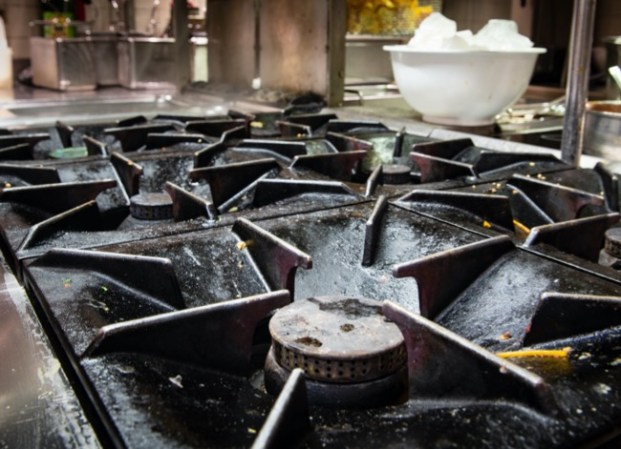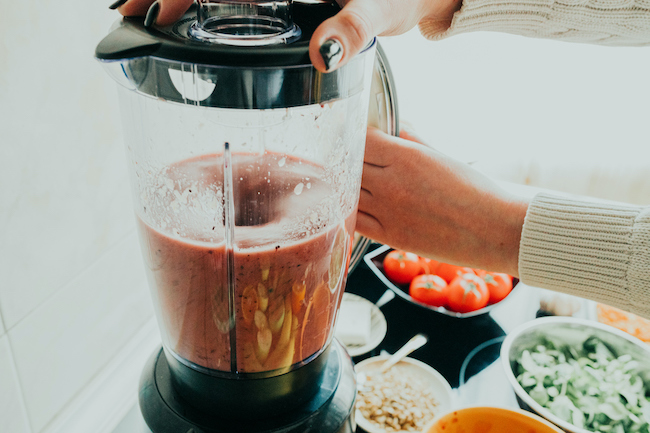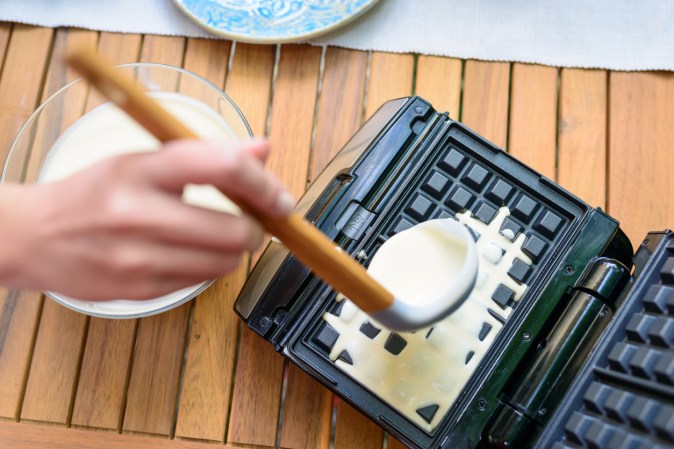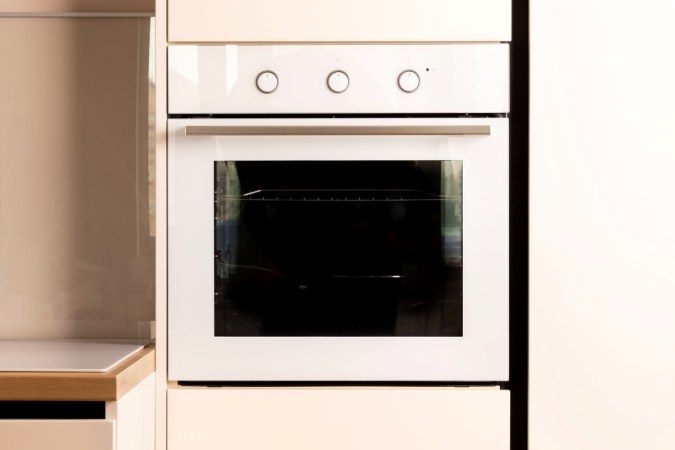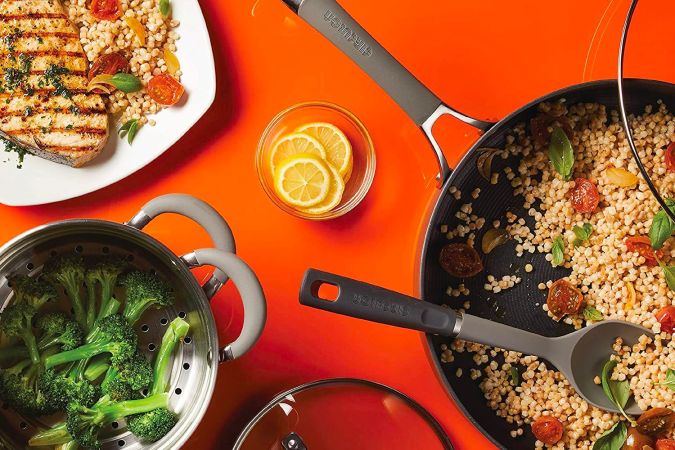We may earn revenue from the products available on this page and participate in affiliate programs. Learn More ›
Properly executed, meal planning can help a home cook navigate the uneven and often-shifting terrain of family food preferences and dietary requirements. It streamlines grocery shopping, eliminates the daily scramble to even decide on dinner, let alone prepare it, and minimizes the money you spend on last-minute takeout, delivery, or drive-thru meals. Meal planning and freezing helps reduce food waste, which is yet another money saver.
When you know what’s on the menu each evening, you can provide nutritious and delicious eats while saving time, sticking to your food budget, and remaining relatively chill come dinnertime.
RELATED: What Temperature Should a Refrigerator and Freezer Be?
1. Know Your Why

Why do you want to start meal planning? If it’s “because my mom and sister both do and said I’d love it ” or “I saw it on TikTok,” take some time to think about what interests you about it and what you hope to achieve.
That’s because your strategy may differ depending on which of the many good reasons to do so resonates more than the others. Meal planning to save money won’t look the same as doing so to accommodate one family member who’s vegan, another who eats gluten-free, a third who’s allergic to eggs, and two omnivores. Getting clear on your meal-planning motivation will make it easier to get the most from your approach.
RELATED: 21 Money-Saving Tricks That Every Homeowner Needs to Know
2. Easy Does It
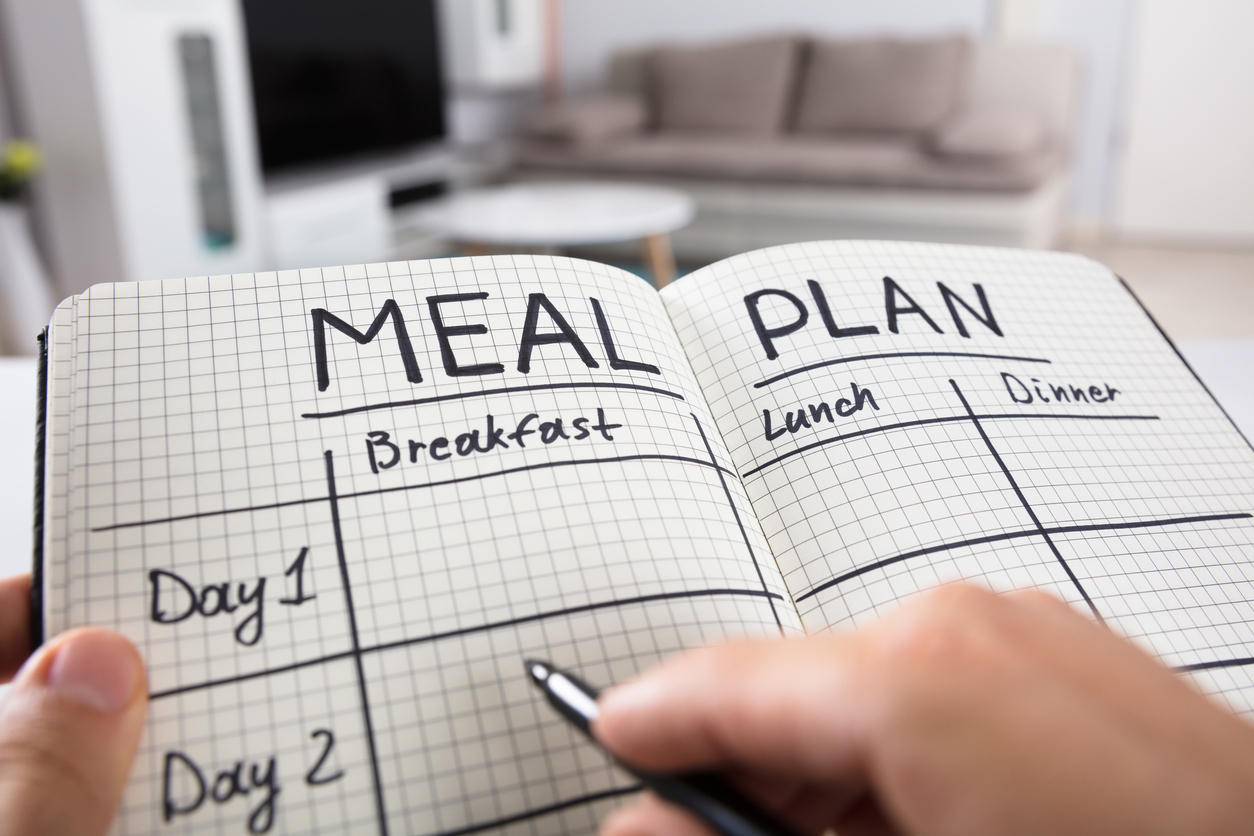
There’s no need to reinvent the meal-planning wheel. Start by making a master list of all the dishes your family loves and your go-to quick supper solutions. Keeping the typical weekly schedule in mind, start slotting in your meal ideas for the next week or two.
Some folks lay out an entire month in advance, but that’s Meal Planning 201; it’s perfectly fine to start small—and/or stay small, if that works best. You can always level up later on, if you like!
If it relieves some of your stress, follow a friend or favorite influencer’s plan. But beware of introducing too many changes at once, which could prove overambitious. And remember that you don’t have to plan seven brand-new meals each and every week. Designate one day for going out or ordering in; another could be YOYO—”you’re on your own”—Night, or Guest Chef dinners, when other family members take it in turns to don an apron and whip up their own specialties.
However you choose to start, those first few weeks will be eye-opening. Consider it a trial run that will teach you what does and doesn’t work for your dinner table and those who gather ‘round it.
RELATED: 17 Pantry Foods That Never Expire
3. The Best Laid (Meal) Plans
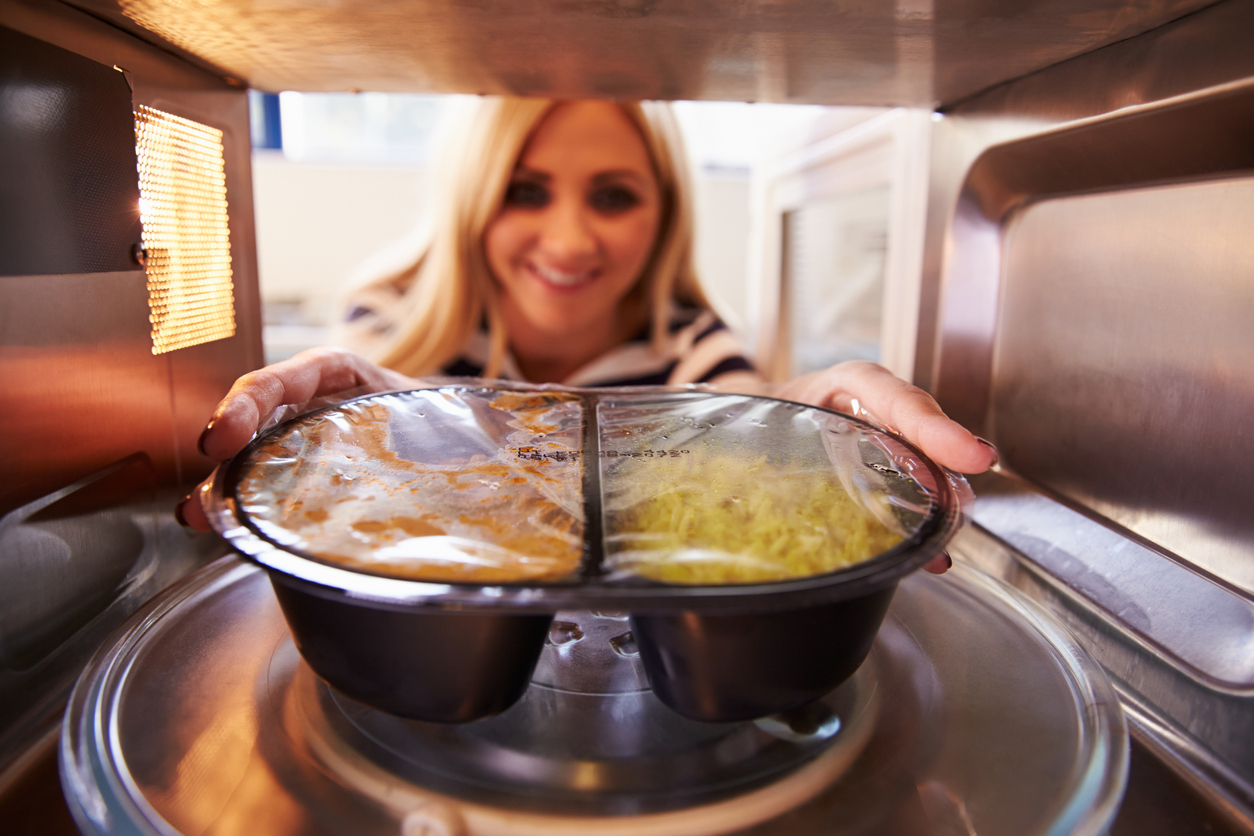
What will you do when it’s One of Those Days, when your afternoon or evening gets torpedoed for whatever reason? Let’s say the car broke down, one of the kids stayed home sick, or you’re all under the weather. Some folks might be OK with delivery on these nights. Others may want to avoid delivery altogether, or reserve it for special occasions rather than relying on it to save their bacon.
“Plan meals but stay flexible,” advises Holly Galaris, certified online fitness and nutrition coach and creator of Sun Love Fitness. “Life can throw surprises, so have backup recipes that are quick and easy, or flexible ingredients for last-minute changes.”
You might keep a selection of “no-cook” meal supplies on hand for such nights, whether those are sandwich fixings, canned soups, or frozen dinners. Heating up leftovers is easy enough, as is squirreling away a selection of meal kits.
Whatever you ultimately decide, it’s worth thinking about in advance so you’ve got a backup plan or two in your back pocket.
RELATED: How to Freeze Dry Food the Right Way
4. Theme Nights

If your family already celebrates Meatless Monday, Taco Tuesday, or Pizza Friday, you’re halfway home when it comes to having a weekly meal plan in place. There’s no reason you can’t assign each day of the week its own theme—even if one is “New Recipe Night” or “Who Knows Night.”
Recurring categories can provide helpful parameters, but keep them broad enough that there’s some wiggle room. For example, Pasta Wednesday rather than Baked Ziti Wednesday could mean mac and cheese, tuna casserole, haluski, or pad thai in addition to Italian-American classics. Similarly, “Taco Tuesday” might look like American hard-shell tacos with ground beef, Baja fish tacos, bean tostadas, cheese quesadillas, chicken taquitos, or even fusion Korean beef bulgogi tacos.
Another way to simplify things is to use protein or even meal type as your theme components. Fish on Fridays, Tofu Thursdays, Casserole Sunday, Saturday Steak Night, Breakfast for Dinner, Soup or Stew…you get the idea. (And you might be getting hungry!)
Most importantly, though, is making sure that everyone’s on board. These meals are for the folks who gather around your dinner table every evening, not your social media followers.
“Involve family members in the planning process to accommodate everyone’s preferences and make mealtime more enjoyable,” advises Galaris. “Meal planning is meant to make your life easier, so find what works best for your family and adapt as needed.”
RELATED: 11 Minimizing Methods to Help You Live with Less—and Why You Should
5. Incorporate Meal Prepping
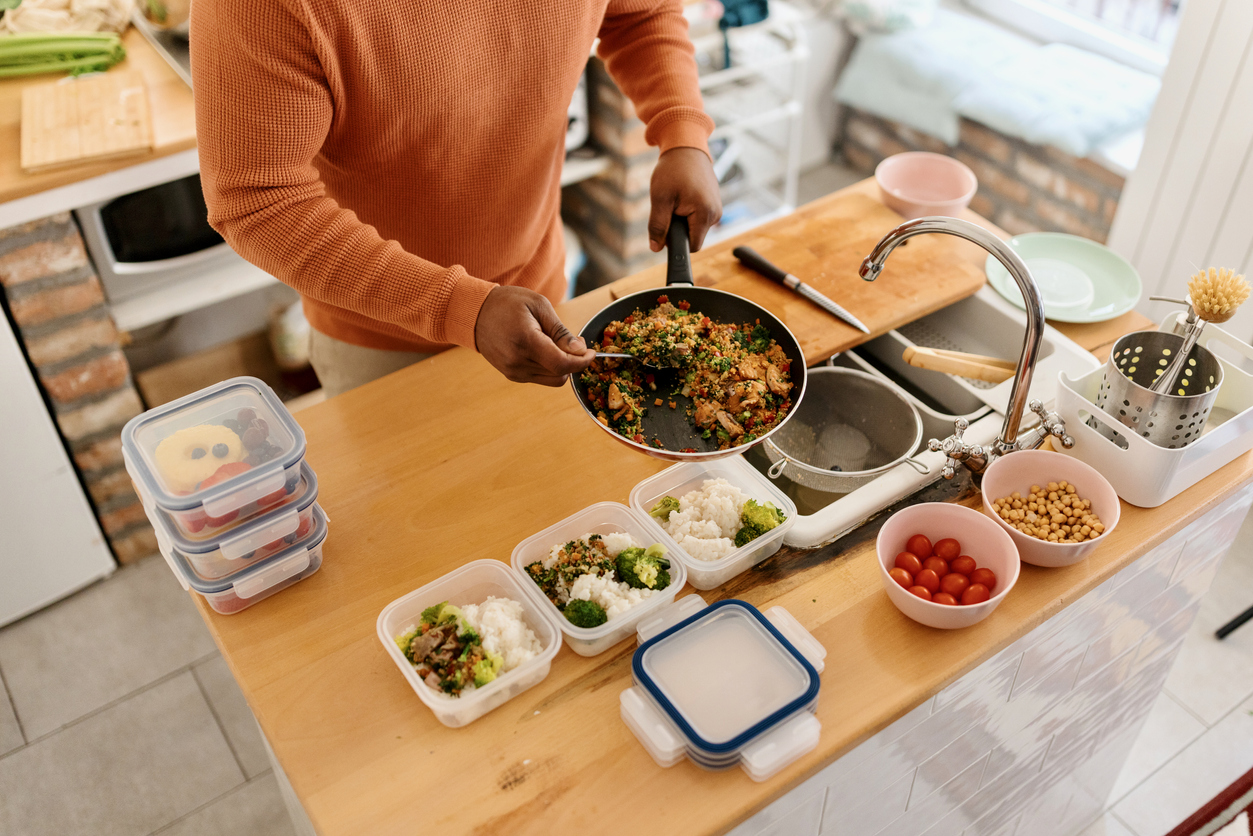
Meal planning and meal prepping go hand-in-hand, since it’s often as easy to make eight or 12 servings as it is four or six. Batch-cook whenever possible and freeze the extras. A stockpile of ready-made meals that you know the family will enjoy is sure to come in handy, whether you plan to serve them on especially busy evenings or turn to them on an ad-hoc basis.
Another way to set your meal plan up for success is to take a weekend afternoon (or any time that works with your schedule, of course) to wash and prep veggies, marinate chicken, bake tofu, hard boil eggs, precook a big batch of grains, and whiz together a savory sauce or piquant dressing. While you wait for these ingredients to heat up or cool down, save yourself more time by packaging snacks—whether homemade or store-bought—into single servings. You (or your kids) can ensure everyone’s lunch bags or bento boxes are ready to go, and if you’re feeling inspired, write out the week’s menu for everyone to view.
RELATED: The 10 Most Important Products for Meal Prep, According to Chefs
6. Planned Leftovers/Double-Duty Ingredients
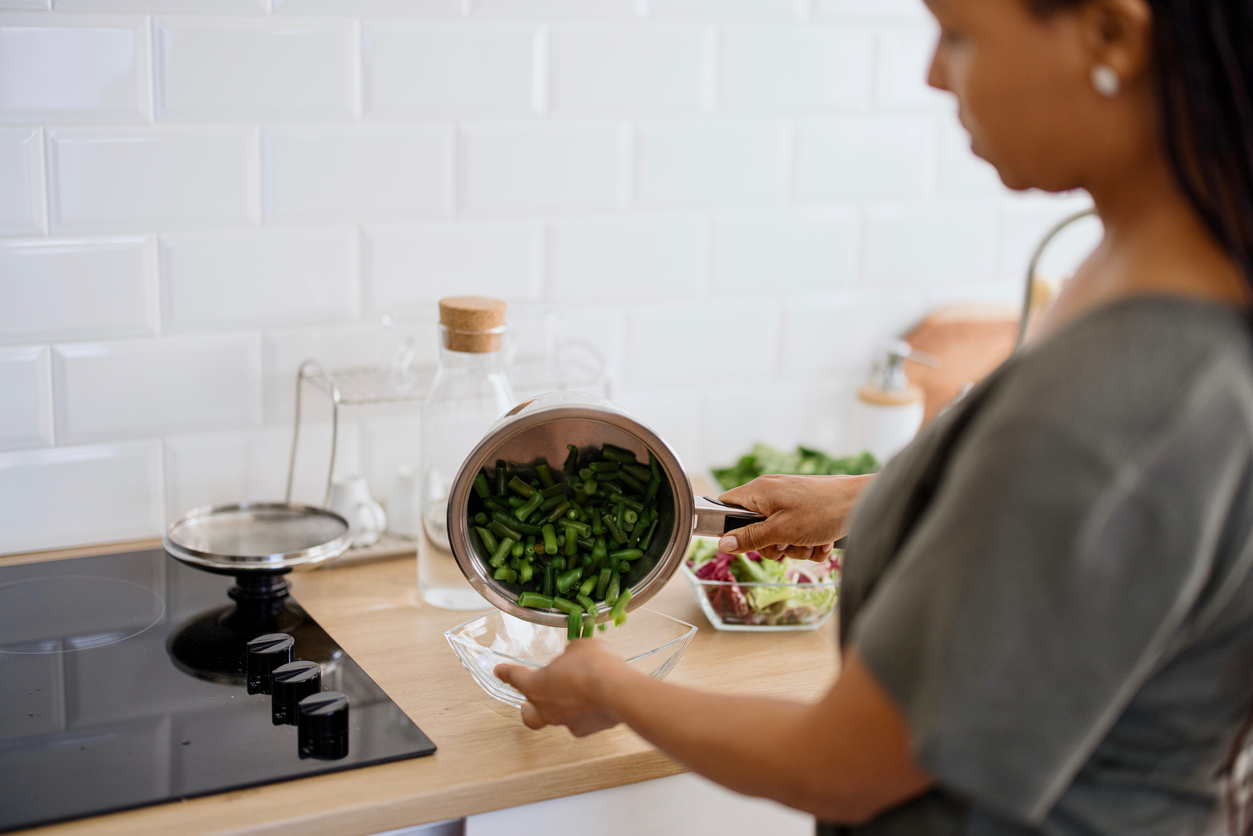
If you are a seasoned fixer-of-family-meals, it might be second nature to press ingredients into double-duty service or incorporate planned leftovers into your cooking playbook. Nevertheless, here’s a reminder that you needn’t start from scratch each and every night with all-new ingredients.
When looking at the next week’s or fortnight’s potential meal plan, think about shifting dinners around to utilize the same foodstuffs, especially fresh produce, herbs, meats, and other perishables. When you purchase a specialty ingredient for a particular recipe, aim to use it in another dish later that week, unless you can freeze or otherwise preserve it (or hide it deep in the crisper drawer as a special snack treat). Getting in the habit of doing a quick inventory will keep odds and ends front-and-center.
Adopt “Cook once, eat twice” as your new mantra. Brown rice can serve as a base for soupy, spicy black beans on Monday, then get tossed in a wok with the week’s uneaten veg for Stir-Fryday. Buy or bake a big loaf of Italian bread for Sunday night’s make-your-own subs and Tuesday’s garlic bread with minestrone—then turn the rest into croutons to top the weekend’s lunch salads.
RELATED: 9 Garden Vegetables, Fruits and Herbs That Keep Well in the Freezer
7. Bowls, Bars, and Buffets

Is it difficult to decide on dinners that the whole family can, or will, eat? Turn to bars, buffets, and bowls that each eater can customize. This can be a Leftover Smorgasbord, or variations on a theme. Set out all the fixin’s for DIY sandwiches or wraps. Let folks assemble their own noodle or grain “Buddha bowls.” Personalized pizzas or flatbread melts are a snap when you can rummage in the refrigerator for sauces (BBQ, marinara, pesto, hummus, ricotta) and toppings (shredded cheese, cured meats, cooked or raw vegetables, pickled tidbits, nuts, herbs) and pile them on tortillas, pitas, Texas toast, English muffins, even canned biscuit or crescent-roll dough.
RELATED: 14 Ways to Pull Off a Double-Duty Dining Room
8. Handy Lists & Other Products
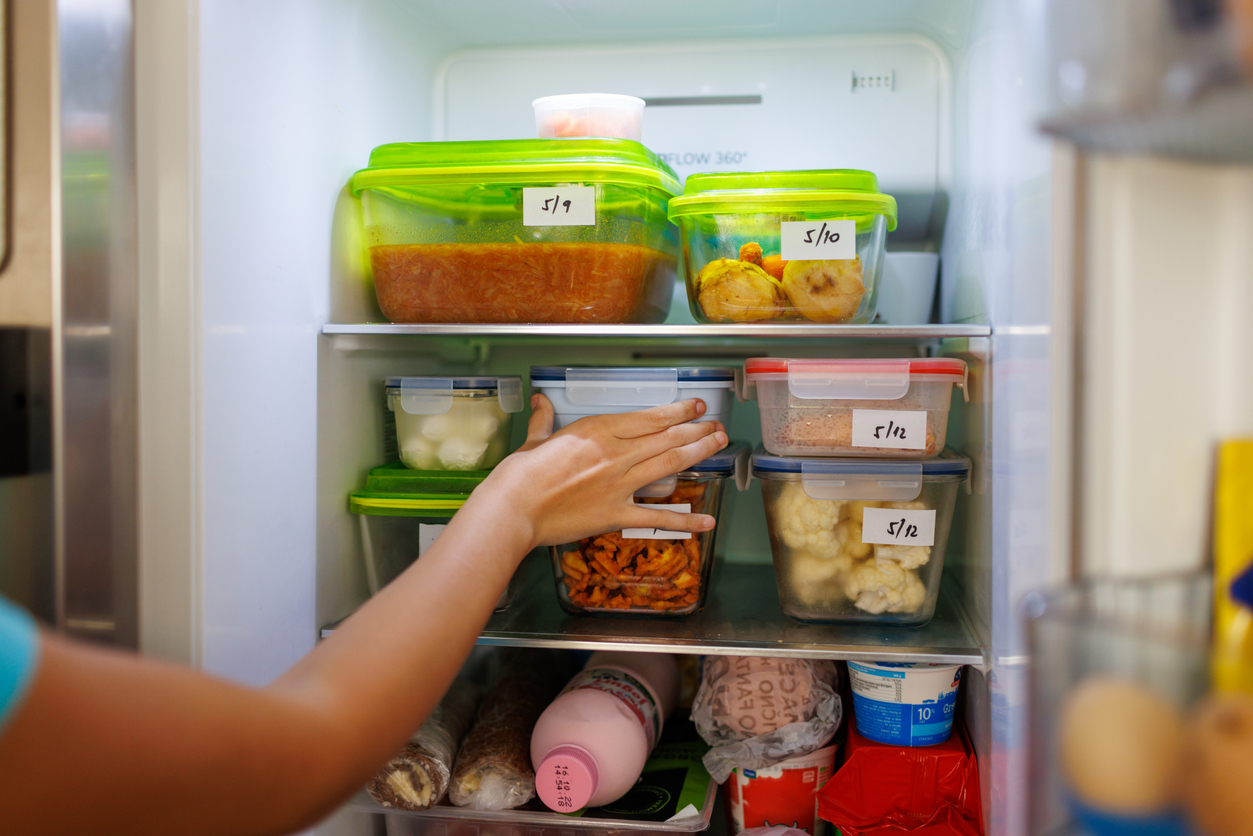
If preprinted meal-planning templates, fancy storage containers, or any other helpful products get you excited about meal planning, more power to you—by all means use them. But they’re not necessary. Your weekly menu works just fine on scrap paper, a magnetic whiteboard, or your chalkboard calendar. Or create your own flashcards of individual meals and their component ingredients, color coded if you’re crafty, and shuffle ‘em around until you’ve dealt yourself a winning hand of weekly eats.
Ditto storage solutions. Leftovers might be more appealing, or easier to reheat, when stashed in clear glass containers; silicon storage bags can go from fridge to freezer to boiling water. But if you’re on a budget or just feel better about repurposing jars and yogurt containers, that’s fine too.
Keep in mind that the purpose of meal planning isn’t to turn your kitchen into a Tiktok fever dream. It’s to save money, eat better, stress less, spend more time with your loved ones, waste not, and make meals fun again instead of a dreaded chore.
RELATED: Pantry Storage Ideas – 14 Instant Fixes
9. Meal Planning Lite: Future Foods

Meal planning still seem daunting to you? Maybe your schedule is simply too unpredictable to plan more than a day (or hour) in advance, or you’re never sure who will be home for dinner when. Try the Future Foods method instead.
Here’s how it works: every time you remember a forgotten classic, or encounter an intriguing recipe, or your teenager has a hankering, or your spouse requests a specific supper, write it down somewhere everyone can see it. Glance at this whenever you need inspiration before going shopping at the supermarket or spelunking in the freezer. When you ask everyone what they want to eat tomorrow and the response is a resounding “I dunno”? Point them politely toward the Future Foods list. It’s also the answer to “You know what sounds really good? Homemade chicken tenders and oven fries,” or “Hey, I’ve been craving your cheesy corn chowder,” or “We gotta try making that fluffy Japanese pancake in the rice cooker.”


